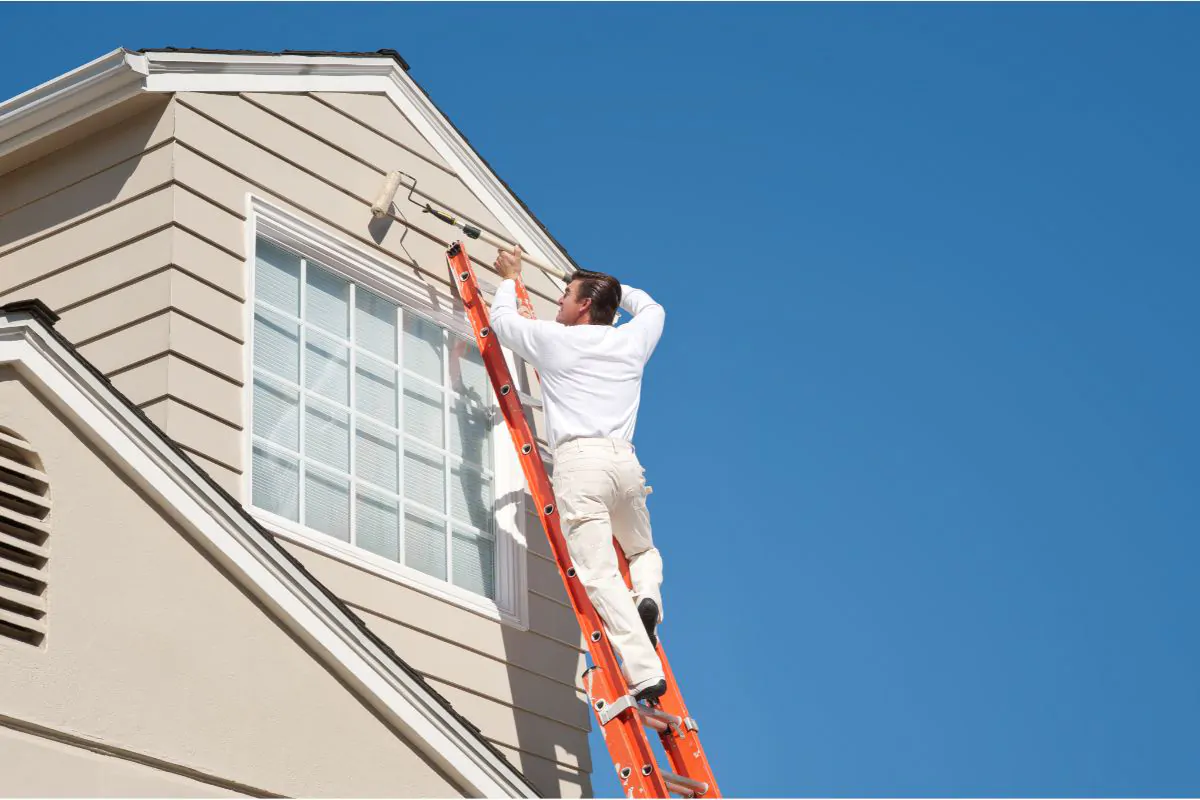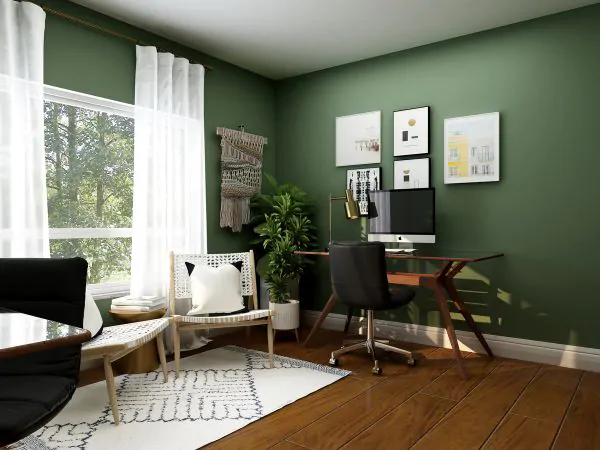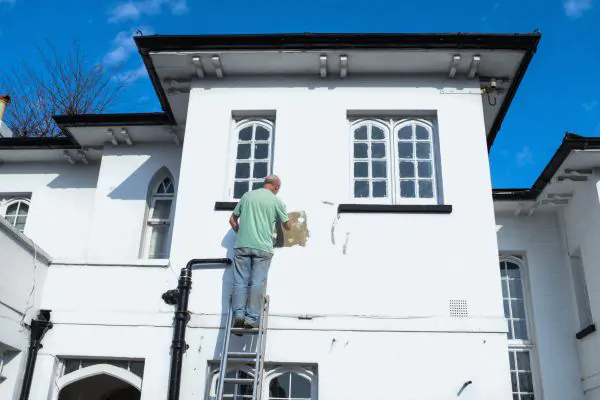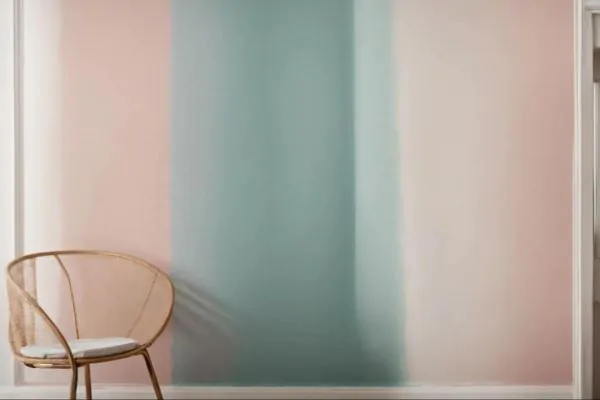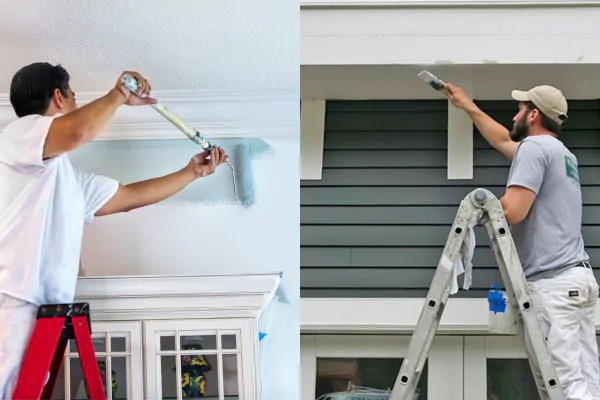
Have you ever stood in the paint aisle, feeling a bit puzzled by the sea of cans labeled ‘interior’ and ‘exterior’? You’re not alone. Choosing the right type of paint for your project is essential to ensure that it withstands time and elements, whether it’s sprucing up a living area or giving your home’s exterior a fresh coat.
The truth is, that interior and exterior paints are formulated differently to meet unique challenges posed by their environments.
Did you know that exterior paints are specially designed to resist fading from sunlight and can withstand temperature changes without cracking? This fact highlights the importance of using the correct paint for its intended purpose.
Through this blog, you’ll discover why picking between interior and exterior paints isn’t just about color options but also about protecting your investment. From composition to finish, we will guide you through all there is to know about these two types of paints so that your next painting venture shines inside out!
Composition of Interior and Exterior Paints
Understanding the composition of interior and exterior paints is crucial for selecting the right product for your project. Both types of paints are formulated differently to meet the specific demands of their respective environments. Here’s a breakdown of their typical compositions:
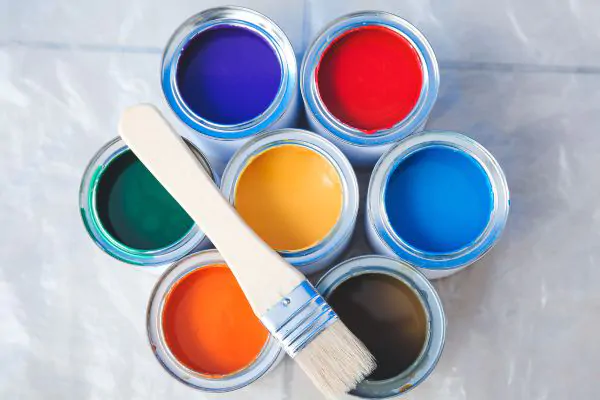
Interior Paint Composition
Understanding what goes into a can of interior home painting products is key to choosing the right type for your space. These paints are typically made from a blend of ingredients that include pigments, which give color; binders, which hold the paint together after it dries; solvents or water, which make the paint spreadable; and additives, which offer extra features like stain resistance.
Interior paints often contain less volatile organic compounds (VOCs) than exterior types because they’re designed to maintain good indoor air quality.
The choice of materials in inside house paint reflects its intended use—being durable against cleaning and resistant to fading over time without exposure to harsh weather conditions.
These compositions result in smoother finishes that withstand everyday life’s wear and tear within our homes. As you consider painting projects indoors, think about these attributes—ease of application, durability under typical home conditions, and low odor for a pleasant living environment as you refresh your walls with new colors.
Exterior Paint Composition
Exterior paint needs to be tough. It’s formulated to withstand rain, snow, wind, and sun. Manufacturers make exterior paint with resins that are soft yet durable, allowing it to expand and contract without cracking as temperatures change.
This outside painting marvel often contains additives that fend off mold and mildew—crucial defenders against the elements for your home’s exterior.
Pigments in exterior paints have a job beyond looking good; they must resist fading when exposed to prolonged sunlight. You’ll find special chemicals in the mix, too. These UV blockers keep colors vibrant for years, safeguarding your investment in exterior home painting projects.
With an array of types of paints tailored for different surfaces—wood, masonry, or metal—the right choice ensures long-lasting results and curb appeal that turns heads.
Now let’s dive into how these characteristics play out when it comes to functionality and performance outdoors.
Related Post: Exploring Elastomeric House Paint: Pros vs. Cons
Functionality and Performance
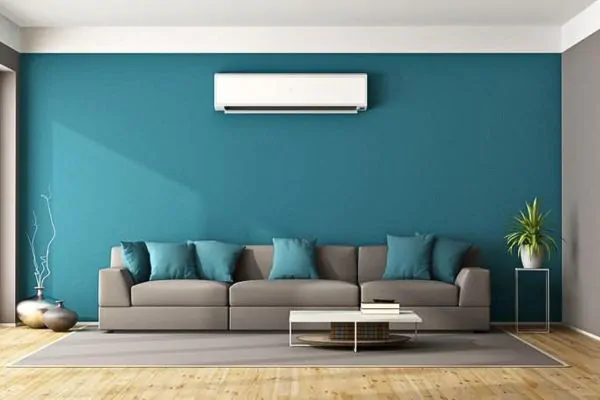
Interior and exterior paints are formulated to meet different performance needs. While interior paint is designed to withstand scrubbing, stains, and frequent cleaning, exterior paint is engineered to resist fading, cracking, and weathering from the elements.
Interior Paint Functionality
What sets interior paint apart is its unique formula, designed to endure the daily wear and tear of home life. It’s crafted to resist staining and allow easy cleaning, ensuring your walls look freshly painted for longer.
Unlike exterior paints that need to fend off harsh weather conditions, interior paint focuses on durability against physical contact and frequent cleaning. With a variety of finishes from matte to gloss, you have the flexibility to choose just the right sheen for each room in your house.
Imagine spilling coffee on your kitchen wall; with high-quality interior paint, a quick wipe down is all it takes – no stains left behind. These paints are also typically low or zero VOC (volatile organic compounds), making them safer for you and your family while helping maintain indoor air quality.
Your living space remains vibrant without those strong fumes associated with traditional painting products. Whether transforming a bedroom or brightening up a bathroom, this inside paint ensures that each corner of your abode radiates warmth and style effortlessly.
Exterior Paint Functionality
Exterior paint serves as a protective barrier against the elements, safeguarding your home from moisture, UV rays, and temperature fluctuations. It’s specially formulated to withstand outdoor conditions and is designed to resist fading, cracking, and peeling.
Additionally, exterior paint often contains additives that help prevent mildew and mold growth, ensuring your home maintains its aesthetic appeal while being protected from environmental damage.
Furthermore, exterior paints are engineered for greater durability compared to interior paints due to exposure to harsh weather conditions. These paints are formulated with stronger binders and resins that provide superior adhesion to surfaces subjected to constant sunlight, rain, wind, and snow.
You might like: 7 Factors to Consider When Choosing Exterior Paint Colors
Differences in Finish and Appearance
Interior Paint Finishes: Interior paints are available in various finishes such as flat, eggshell, satin, semi-gloss, and high-gloss, each with its unique sheen and level of durability.
Exterior Paint Finishes: Exterior paints typically have a more durable finish compared to interior paints to withstand harsh weather conditions. Common exterior paint finishes include flat/matte, satin, and gloss.
Interior Paint Finishes
Interior paint finishes come in a variety of options, each with its own unique characteristics. Common types include flat, eggshell, satin, semi-gloss, and high-gloss finishes. Flat finishes have no shine and are ideal for hiding imperfections on interior walls.
Eggshell finishes offer a subtle sheen while being easy to clean, making them suitable for living rooms and bedrooms. Satin finishes provide a gentle glow and are perfect for high-traffic areas such as hallways and family rooms.
Semi-gloss and high-gloss finishes have a shiny appearance that makes them ideal for kitchens, bathrooms, trim work, doors, and cabinets.
Exterior Paint Finishes
Exterior paint finishes are specifically designed to withstand weather elements, such as rain, snow, and UV exposure. These finishes offer enhanced durability and protection against fading and peeling.
Common exterior paint finishes include flat, satin, semi-gloss, and high-gloss options, each with its own level of reflectivity and sheen. The choice of finish can significantly impact the appearance of your home’s exterior while providing long-lasting protection against environmental stressors.
When selecting an exterior paint finish, consider factors such as the architectural style of your home and the climate in which you live. Additionally, certain finishes may be better suited for specific surfaces, such as stucco or wood siding.
Similar Post: What are the Different Types of House Paint?
Best Applications for Interior Paints
Interior paints are ideal for enhancing the visual appeal of living spaces such as bedrooms, living rooms, and kitchens. They can be used on walls, ceilings, and trim to create a fresh and inviting atmosphere within your home.
These paints work well for surfaces that receive moderate wear and tear, making them perfect for residential use. Additionally, interior paints come in a variety of finishes, including matte, eggshell, satin, semi-gloss, and high-gloss options, providing flexibility in achieving the desired look and feel.
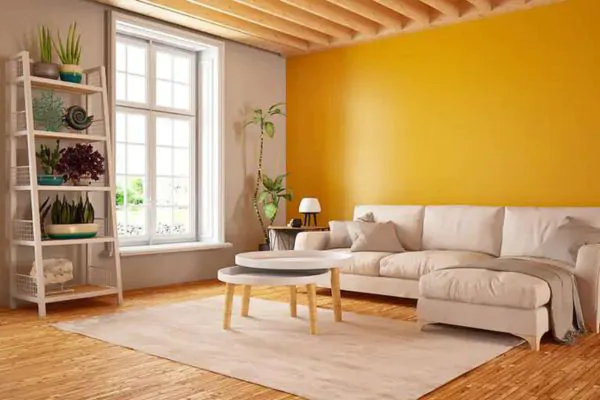
When selecting an interior paint color scheme or finish type to match your design preferences or lifestyle needs may seem overwhelming at first glance, it’s vital to remember that each option has its unique advantages depending on the specific usage area you have in mind with various applications based on functionality.
Best Applications for Exterior Paints
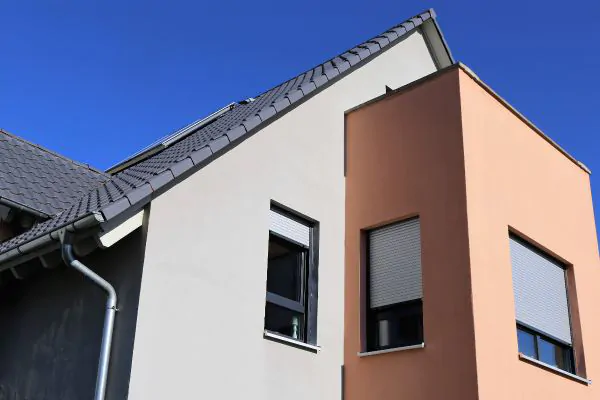
Exterior paints are best suited for a variety of surfaces, such as wood, metal, concrete, and stucco. These paints provide excellent protection against harsh weather conditions, including UV rays, rain, and snow. They also offer resistance to mold, mildew, and algae growth due to their durable composition.
These paints are perfect for outdoor applications on surfaces such as siding, trim work, doors, shutters, fences, and decks. With their strong adhesion properties and color retention abilities over time, exterior paints can significantly enhance the curb appeal of your home while providing long-lasting protection against the elements.
Conclusion
These insights will help you make informed decisions when choosing paint for your next interior or exterior painting project. Consider how these factors can enhance the practicality and efficiency of your painting endeavors.
Which areas in your home or property could benefit from a fresh coat of paint? Reflect on the impact that using the right type of paint can have on the longevity and aesthetic appeal of your indoor and outdoor spaces.
Explore additional resources to expand your knowledge and find a painting company for your painting needs. Contact Santa Fe Painters!


